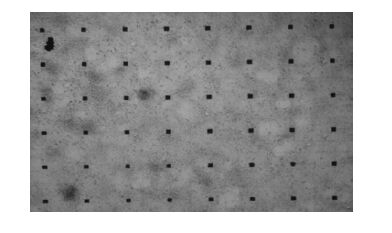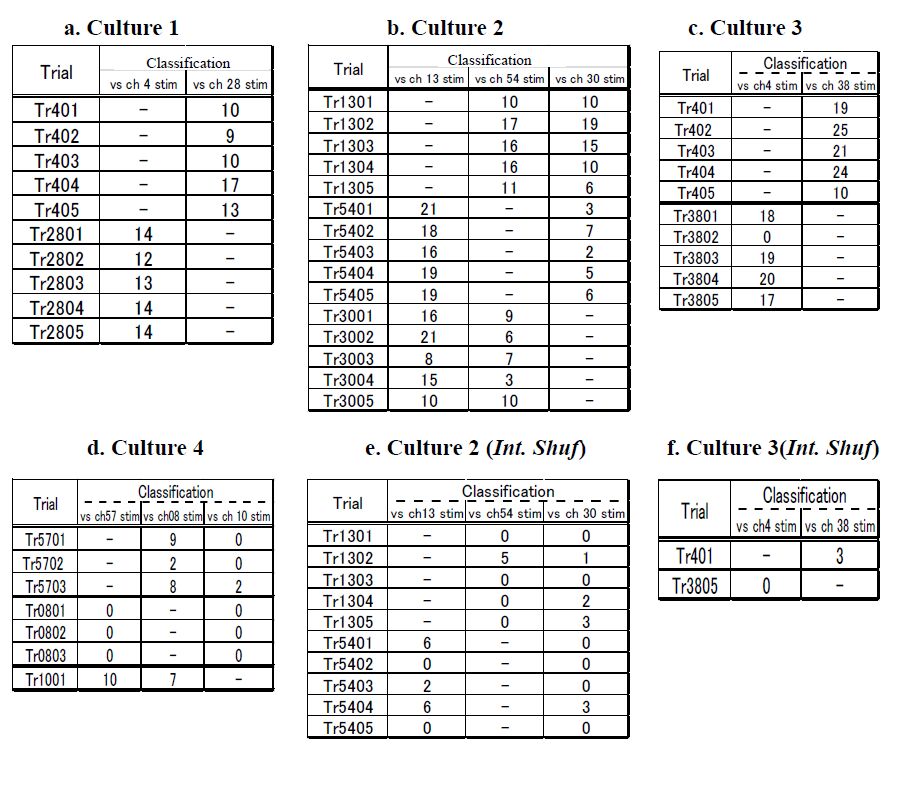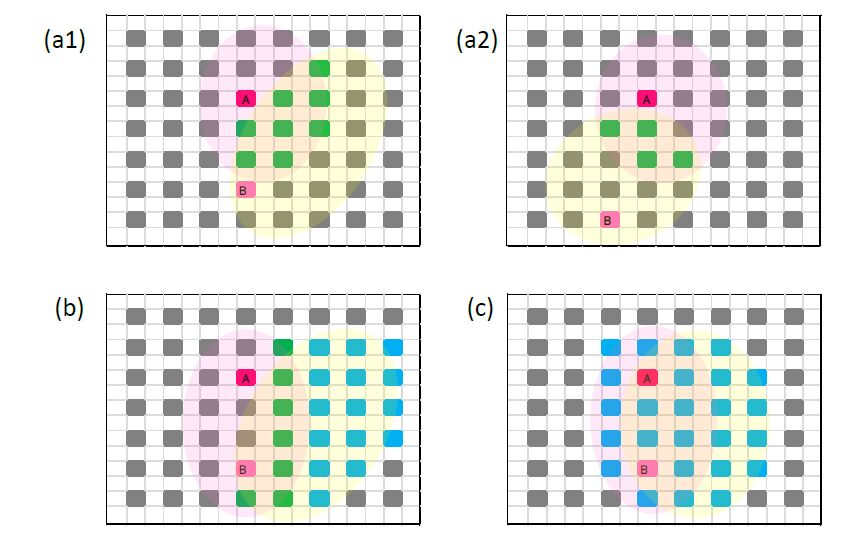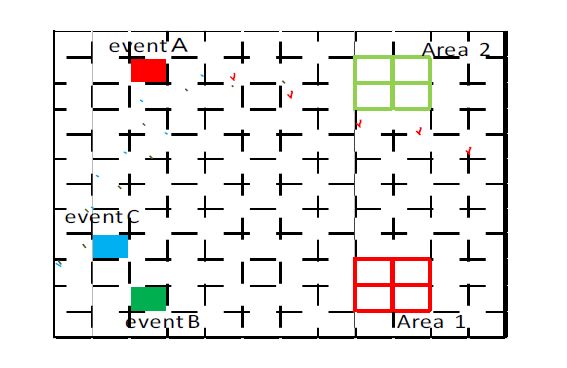1. Introduction
The brain is an intellectual information processing system [1,2,3,4,5]. How a neuronal network of ambiguously behaving neurons establishes a highly reliable information processing system, distinct communication, and organized communication links is an unanswered question. Despite many researchers attempting to solve this question, it remains a mystery.
In previous studies, factors such as spatiotemporal coding, the Synfire chain, and the spatiotemporal form of spike activity were considered the fundamental generators of natural intelligence in the brain [6,7,8,9,10,11]. However, basic communication functions between neurons have not been elucidated in these studies. Therefore, the abovementioned question still remains unsolved.
Recently, we focused on distinct and different communication to investigate the previously mentioned question [12,13,14,15]. In previous work [16], spike propagation as a cluster of excitation waves, termed as spike wave propagation, was observed in cultured neuronal networks. However, in those experiments, it was only observed that various spike wave propagations were generated in neuronal networks. The details of these mechanisms were still unclear.
To investigate these mechanisms, we simulated a 9 × 9 2D mesh neural network consisting of an integrate-and-fire model without leak. Resulting from this method, multiplex communication is possible at a success rate of 99% [17]. This result suggested that distinction of the spike wave propagation spatiotemporal form was the clue to classifying multiple communications in the brain. Here, we assume spike wave propagations are just communication events in the brain and attempt to prove this assumption. However, physiological experiments, analysis, and discussions about these events have yet to be reported [17].
In this study, we attempt to classify various spike wave propagation from different stimulated neurons in cultured neuronal networks, as well as discuss the implications of these classifying results in a view of brain communication. The authors' research group is presently studying the functions of neuronal networks by combining experiments with cultured neuronal networks with artificial neural network simulations. This paper corresponds to previous work on the ability of remote receiving neurons to identify two transmitting neuron groups stimulated in a neuronal network, i.e., 2 to 1 communication [17]. These mechanisms may be the basis of higher cortical functions.
The aim of this study is to investigate the most essential question in our study: to identify what the spatiotemporal form of spike wave propagation suggests in view of communication in brain physiologically.
2. Methods
2.1. Cell cultures
Cell cultures of hippocampal neurons were dissected from Wistar rats on embryonic day 18. The procedure conformed to the protocols approved by the Institutional Animal Care and Use Committee of the National Institute of Advanced Industrial Science and Technology. Hippocampi were dissociated with 0.1% trypsin (Invitrogen; Tokyo, Japan) in Ca2+- and Mg2+-free phosphate-buffered saline at 37 °C for 15 min. The dissociated neurons were planted at a density of 3.3 × 105 cells/mm2 in polyethylentimine-coated microelectrode array (MEA) dishes (MED-P515A, Alpha MED Scientific; Kadoma, Japan) with 8 × 8 planar microelectrodes. The size and spacing of the electrodes were 50 × 50 μm2 and 150 or 450 μm, respectively. To position the neuronal networks in the central area of each MEA dish, a cloning ring with an inner diameter of 7 mm was used. The ring was removed the following day. Neurons adhered to the substrate of the MEAs, covering all electrodes.
Neurons were maintained at 37 °C in a humidified atmosphere of 5% CO2 and cultured for 21-40 days in Dulbecco's modified Eagle's medium (Invitrogen), which contained 5% horse serum and 5% fetal calf serum with supplements of 100 U/ml penicillin, 100 μg/ml streptomycin, and 5 μg/ml insulin. Half of the culture medium was renewed twice per week. In this study, four cultured cell samples at 22-50 days in vitro were prepared and are referred to as Cultures 1, 2, 3, and 4. Figure 1 shows a micrograph of the cultured neurons in an MEA.
2.2. Stimulated spike recording
Stimulated spikes were recorded using MED64 (Alpha MED Scientific; Osaka Japan), an extracellular recording system with 64 electrodes (channels). The size of each electrode is approximately the size of a neuron. The recording was performed for 3 s at a sampling rate of 20 kHz. A selected channel was stimulated at 5 ms after the start of the recording. The stimulation signal was a current-controlled bipolar pulse (positive, then negative) with a strength of 10 uA and a duration of 100 us.
Two to threechannels in each culture were selected as the stimulation channels, and they were subjected to 10-15 recordings. In this study, the stimulated channels are referred to as StimA, StimB, and StimC. Incidentally, this study investigates whether the original stimulated channels (StimA, B, or C) can be identified from spike trainat each channel (including multi-neurons), rather than by single neurons. Therefore, spike sorting was not performed.
2.3. Coding spike trains
The recorded spike trains were coded as follows: first, raster plots were generated by detecting peaks above a pre-specified threshold on each channel in the recorded spike responses [18]. Then, spike interval trains were calculated from the raster plot data.
2.4. Classifying procedure
Previously [16], effort was made to analyze the differences in the spike spatiotemporal pattern corresponding to the stimulated neuron using the dynamic time warping (DTW) method. This method uses adynamic programming technique to find the minimum distance by stretching or shrinking the linearly or non-linearly warped time series and is thus useful for finding the optimal alignment between two non-uniform time series [19]. However, the DTW method does not offer an adequate resolution [20]. Therefore, thequalities of the analysis results were not enough to clarify whether multiple spike waves are classifiable.
The brain must have some physiological learning mechanism for classifying spike wave propagations with various temporal patterns. Considering previous experimental results, we used an analytical method with a learning algorithm instead of DTW. In the field of machine learning, back propagation, deep learning, etc. are well known. Though these methods, which imitate the behavior of physiological neuronal networks, are very effective for classifying various and complex data, the learning algorithm seems to be better suited for arranging physiological behavior to fit machine learning. Therefore, in this study, we use a simpler learning algorithm based on the arithmetical average method, which seems to have more compatibility with natural recognition (See Supplementary S-1).
The outline of classifying procedure is as follows.
Repeat for each 64 channel on MED64
(1) Spike train is learned by 5-10 spike temporal patterns with the same stimulated neuron (called neuron A temporarily). This spike train form is termed Learning pattern A.
(2) Learning pattern B (stimulated neuron is neuron B) are created by the same method as Learning pattern A.
(3) To find classifiable neurons, the resemblance of spike train (before learning) on trial (named Trial Data) and learning pattern A or B was estimated by the procedure described in Supplementary S-2.
3. Results
*To explain the detection method of classifiable neurons, the results of Cultures 1 and 2 are in described in detail.
3.1. Culture 1
In Culture 1, 15 spike responses were recorded when channel 4 was stimulated. Five spike responses from the 15 were used for Trial Data named Tr401, Tr402, . . . Tr405, while the other 10 spike responses were used for LearningPattern 4. Next, five Trial Datanamed Tr2801, Tr2802, . . . Tr2805, and LearningPattern 28(channel 28 is stimulated) were created by the same procedure as Tr401-Tr405 and Learning Pattern 4.
Figure 2 shows the result of the resemblance test for Tr2801. In Fig.2b, which focused on channel 16, the mean value of SpsetTrial was significantly greater than that of SpsetLocal (see Supplementary S-2), when the stimulated neuron of the trial was different than that in the learning pattern. No significant difference was observed when the stimulated neuron of Trial Data was the same as in learning pattern(Figure 2a). This result suggested that the stimulated neuron of these Trial Data was not neuron 4. In other words, these Trial Data can be extracted from Leaning Pattern 4 and the stimulated neuron 28 can be classified successfully as a neuron on channel 16. Therefore, this neuron was a classifiable neuron. In this trial, there were 14 classifiable neurons. Table 1a shows the number of classifiable neuron in each trial in Culture 1.
Table 1. The number of classifiable neurons for each Trial Data..
3.2. Culture 2
In Culture 2, Tr1301, Tr1302, . . . Tr1305, Learning Pattern 13, Tr3001, Tr3002, . . . Tr3005, Learning Pattern 30, Tr5401, Tr5402, . . . Tr5405, and Learning Pattern 54 (the stimulated neurons were channels 13, 30, and 54, respectively) were prepared for experiments and learning patterns were created by 5-spike responses. Figure 3 shows the estimation result of the comparison for Tr1304. Sixteen classifiable neurons were observed through comparison with Learning Pattern 54 and 10 through comparison with Learning Pattern 30. Table 1b shows the number of classifiable neurons for each trial.
3.3. Cultures 3 and 4
For Culture 3, channels 4 and 38 were stimulated. For Culture 4, channels 8, 10, and 57 were stimulated. The detection method of classifiable neurons in these cultures was similar to Culture 1 and 2. Therefore, in Culture 3 and 4, only the number of classifiable neurons for each Trial Data in Table 1c and 1d is shown.
3.4. Comparing with Spike Interval Shuffling data
As shown in Figure 2,Figure 3, and Table 1, classifiable neurons were observed in particular areas of neuronal networks. However, there was indication that these classifiable neurons were detected accidentally and purpose of the number of experiments performed was not to dispel this doubt. Therefore, we attempted to detect classifiable neurons from shuffled spike-interval sequence, called Interval Shuffle (Int. Shuf) [21], in parts of the trial data in Cultures 2 and 3.
The numbers of classifiable neurons from Interval Shuffle data were less than from original (non-Interval Shuffle) spike-interval data. In Culture 2, the difference between the two was significant (p < 0.05, as result of t-test). These results show that the detected classifiable neurons from the original spike data were not accidental.
4. Discussion
4.1. Discussion on the analysis results
Based on the experimental results, several classifiable neurons were observed in particular areas of neuronal networks. In detail, multiplexed spike wave propagation share several neurons and some may be used to classify different spike wave propagations. Accordingly, questions arose considering the distribution of classifiable neurons: do both classifiable and non-classifiable neurons exist in the same neuronal network?
The distribution of classifiable neurons is influenced by the distribution of synaptic weights in the neuronal network. It is well known that each neuron has an individually specific (intrinsic) synaptic weight and each neuron is considered classifiable neuron or notdepending on conditions such as synaptic weights. In the physiological experiments, unlike the simulation experiments [17], it is difficult to determine weight distributions intentionally and only a limited number of realized weight distributions were observed. Therefore, distributions of classifiable neurons varied between different cultures.
In attempt to understand why non-classifiable neurons are intermingled with classifiable neurons are intermingled in the same neuronal network, three conditions of spike wave propagation scheme were presumed, as shown in Figure 4. For simplicity, it was assumed that all neurons were connected toneighboring neurons and spike waves spread radially from stimulated neurons. Due to the influence of the synaptic weight distribution in neuronal networks, each spike wave propagates with its own individual spatiotemporal pattern. Therefore, neurons sharing multiple spike wave propagations could be used to classify different spike wave propagations if a spike wave does not spread to neurons stimulated another spike wave each other (Figure 4 a1-2). However, if one spike wave spreads to neurons stimulated by another spike wave, as shown in Figure 4b, some neurons fire the same temporal patterns, even when a different neuron is stimulated. Results shown in Figure 2,Figure 3, and Table 1 suggest that this condition was realized in neuronal network used in these experiments.
Moreover, it was difficult to classify the stimulations of channel 54 and channel 30 in Culture 2, as fewer classifiable neurons were observed. The reason for this result was that spike waves spread to neurons that were stimulated by other spike waves, as shown in Figure 4c. Under this condition, some neurons fire the same temporal patterns, even when a different neuron is stimulated. Additionally, although we assume in this discussion that the spike waves spread in a simple radial direction, neurons are connected randomly in reality. Therefore, both classifiable neurons and non- classifiable neurons observed (Figures 2 and 3).
From Figures 3b and 3c, the distribution of classifiable neurons in Learning Pattern 54 (stimulated neuron was ch54) was different from the distribution of classifiable neurons based on Learning Pattern 30. This phenomenon provides explanation for how spikes wave spread, as shown in Figure 4. If a pair of naturally stimulated neurons generate two different spike waves, the distribution of these spike waves and the overlap area are different, thus reflecting the distribution of classifiable neurons. Consequently, the spatial distribution of classifiable neurons in the network varies when there are multiple targets for spike waves.
Furthermore, we investigated how multiplexed communication affects the processing of intellectual information in the brain. A simple multiplexed communication in the brain was modeled, as shown in Figure 5. The establishment of a virtual communication link from stimulated neurons to a particular area in the neuronal network was observed. Consequently, specific information was received in a particular area (Figure 5). We consider these processes as the fundamental mechanisms of intelligence in the brain. In fact, we hypothesize that the present model is valid not only for simple situations, but also for more complex similar situations.
In contrast, for a few neurons, the mean value of SpsetTrial was greater than SpsetLocal. The mean value was significantly greater when both the trial pattern and the learning pattern were generated from the same stimulated neurons (Figures 2a and 3a). The results of these experiments suggest the possibility of the incorrect classification of some spike wave propagations. However, such neurons are fewer in number than classifiable neurons(when the stimulated neurons are different between the trial and the learningpattern). Therefore, the activities of such neurons may be masked by classifiable neurons. In brief, the trials successfully classified the entire neuronal network in a broad way and the experimental results reflect the distribution of synaptic weight in neuronal networks.
4.2. Function of classifiable neurons in the brain
Thefunction ofclassifiable neurons was investigated in the brain. It was considered that classifiable neurons may participate in distinguishing different communications in the brain and thatmultiplexed spike wave propagations correspond to multiplexed communications in the brain. Some communications use the same neurons, as shown in Figure 4. In this case, the function of classifiable neurons was to classify multiple communications and recognize individual information. This function is similar to the multiplexed communication mechanism in artificial communication systems, such as mobile phones.
5. Conclusion
In this study, we classified various spike wave propagations individually generated from different stimulated neurons using an original spatiotemporal pattern matching the method of spikes in a cultured neuronal network. Based on the experimental results, classifiable neurons were observed in the neuronal network. We also confirmed that the spatial pattern of classifiable neurons within the neuronal network depended on stimulated neurons generating different spike wave propagations. These results suggest that distinct communications occur via multiple communication links in the brain and classifiable neurons play a significant role in this process.
Moreover, multiplexed communicationschemein the neuronal network were modeled in order to discuss the meaning of the multiplexed communication mechanism with regard to the management of intellectual information in the brain. The results of this study suggest that communication in the neuronal network is the basis of brain activity. This research providesa significant clue to solving one of the deepest mysteries of neuronal networks, namely, how seemingly ambiguous behavior among neurons leads to a reliableinformation processing system.
In this study, multiplexed communication is only modeled for one simple situation in a neuronal network. Because the comparable spatiotemporal patterns in the present analytical program are limited to two (events A vs B, A vs C, or B vs C), the resulting multiple analyzed spike spatiotemporal pattern includes only a pair of events (events A vs B, A vs C, or B vs C). Thus, the present multiplexed communication scheme is incomplete and further research is required to investigate situations with more than three events. Although the present scheme may be adequate for more complex situations as well, it is necessary to clarify these situations of multiple communications in the brain in future studies.
Lastly, the features of this paper are summarized as follows:
(1) To our current knowledge this study is the first attempt to investigate multiplex communication in a cultured neuronal network.
(2) Experiments and analysis correspond to a simulation experiment in 9 × 9 2D mesh neural network and sought to identify two transmitting neuron groups stimulated in a simulated neuronal network, i.e., 2:1 communication [17].
(3) The results of this study show a signal transmission principle in neuronal networks which provides a possible solution to the mystery of the manner of reliable neuronal communication, which is thought to be the basis of brain activity.
Acknowledgements
The authors thank E. Ohnishi and M. Suzuki (AIST) for the cell cultures. This study was partly supported by the Grant-in-Aid for Scientific Research of Exploratory Research JP21656100, JP25630176, JP16K12524, and Scientific Research (A) JP22246054 of the Japan Society for the Promotion of Science. The authors would like to thank Enago (www.enago.jp) for the English language review.
Conflict of Interest
The authors declare that there is no conflict of interest regarding the publication of this paper.










 DownLoad:
DownLoad: 







